It’s our final What’s the bigger picture? for the year.
Who will take a guess at this one?
Another highlight from NRS 15051 Schools Photographic collection are photos documenting school children’s participation in the war effort during World War I (WWI).
School children were among the many groups who put their hand to providing comforts for troops at the front.
Organisations such as the Red Cross and the Soldiers Sock Fund encouraged people from all walks of life to knit socks to send to soldiers.
Without the means to wash or dry clothing, new clean socks were greatly needed by soldiers in an effort to ward against trench foot which was rife in the cold, wet mud of the trenches.
For more WWI related content online, see the State Records NSW Centenary of Anzac website.
Corowa Public School, 1917, measuring the number of socks knitted using ‘the sock barometer’. A grand total 140 pairs were completed:
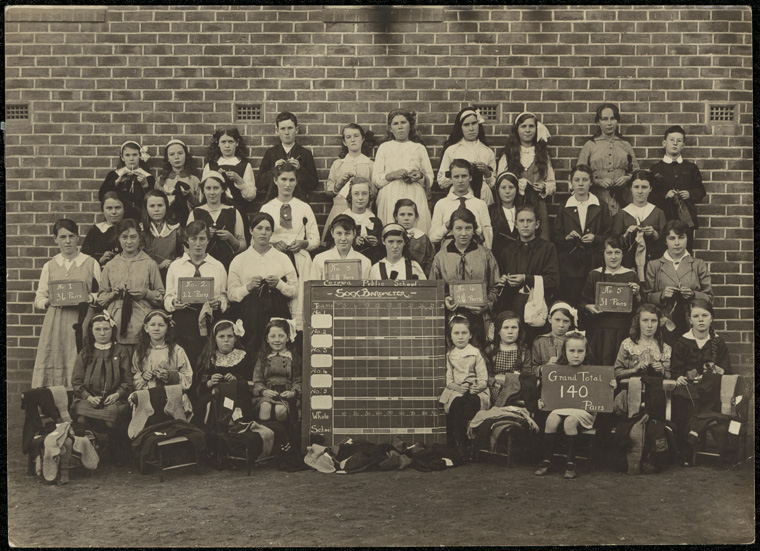
Caption: Corowa Public School – sock barometer, grand total 140 pairs
Digital ID: 15051_a047_003367.jpg
Date: year only 01/01/1917
A newspaper article sourced from Trove emphasises the need for socks by troops at the front and encourages the knitters of NSW to contribute:
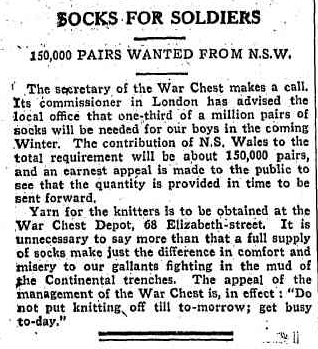
1918 ‘SOCKS FOR SOLDIERS.’, The Mirror (Sydney, NSW : 1917 – 1919), 10 May, p. 3, viewed 17 September, 2014, http://nla.gov.au/nla.news-article136728185
Coonamble Public School, 1918, Red Cross Workers at the Superior Public School:
![Caption: Coonamble Public School - Red Cross Workers Superior Public School Coonamble [spinning and knitting] Digital ID: 15051_a047_003294.jpg Date: year only 01/01/1918](/wp-content/uploads/2014/09/15051_a047_003294.jpg)
Caption: Coonamble Public School – Red Cross Workers Superior Public School Coonamble [spinning and knitting]
Digital ID: 15051_a047_003294.jpg
Date: year only 01/01/1918

Caption: Bondi Public School – spinning wheel
Digital ID: 15051_a047_001478.jpg
Date: month and year only 31/10/1916
Camperdown Public School, 1916, knitting socks:
One of our Archives Outside readers has kindly provided us with images of “The Grey Sock”, a booklet produced by the Soldiers’ Sock Fund in 1914. The booklet provides instructions for knitting socks for soldiers.
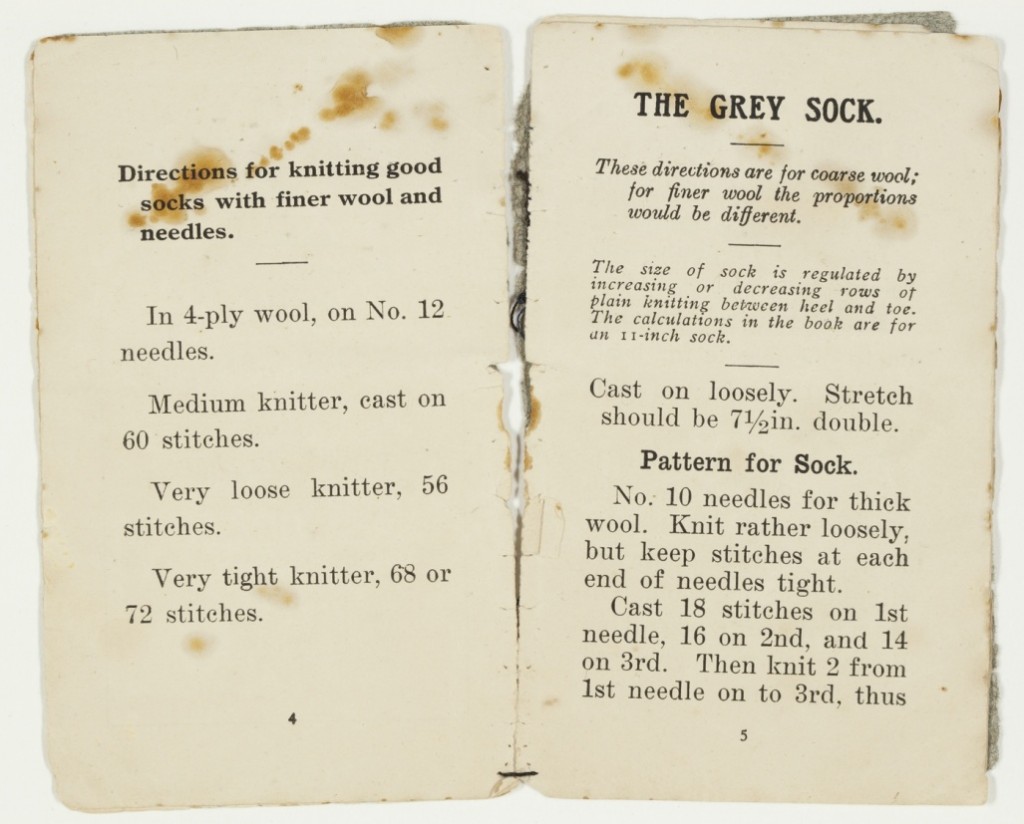
“The Grey Sock” – Soldiers’ Sock Fund booklet 1914
Contributed by Archives Outside reader Rhonda Cetta-Hoye
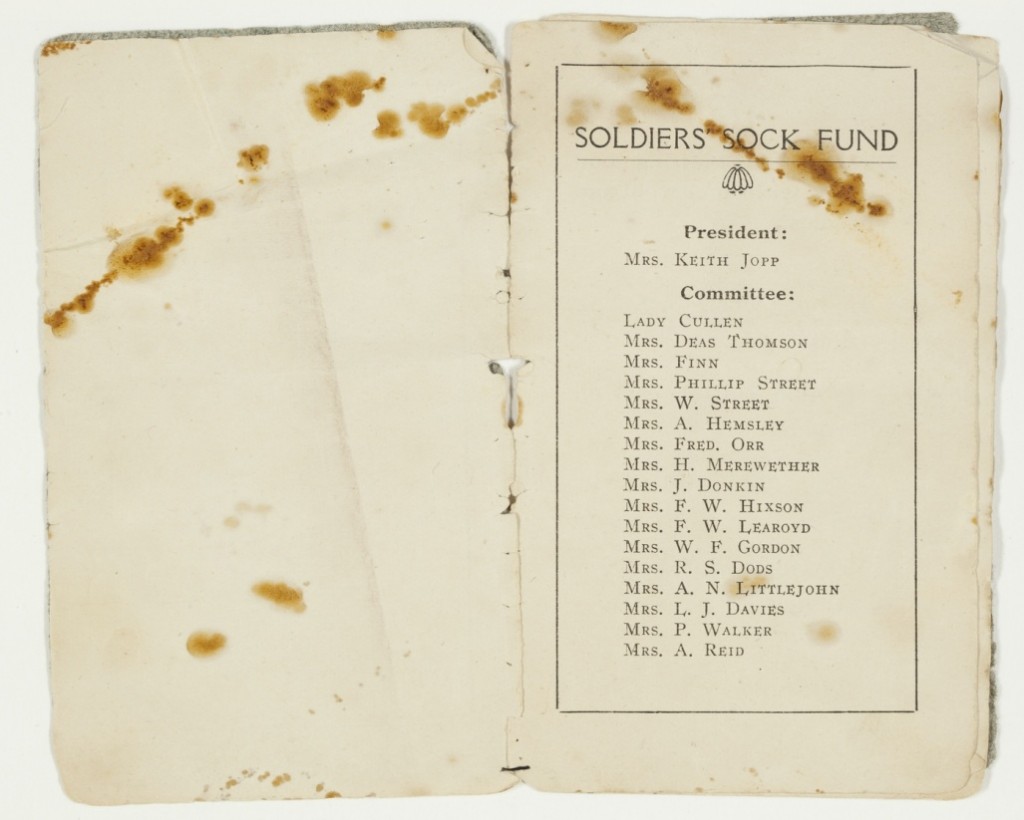
“The Grey Sock” – Soldiers’ Sock Fund booklet 1914
Contributed by Archives Outside reader Rhonda Cetta-Hoye
References and further reading:
“Australian Comforts Fund World War I”, Museum Victoria, available from http://museumvictoria.com.au/collections/themes/1848/australian-comforts-fund-world-war-i
“Booklet – The grey sock 1914”, Powerhouse Museum, available from http://www.powerhousemuseum.com/mob/collection/database/?irn=10108&search=patriotism&images=&wloc=&c=1&s=0
“Homefront – World War I and Australia”, State Library NSW, available from http://guides.sl.nsw.gov.au/content.php?pid=489033&sid=4179071
“Knitting for the Troops” Australian War Memorial, available from https://www.awm.gov.au/blog/2013/10/25/knitting-troops/
Something a bit different for this round of Can you date this photograph?
This is the main concourse of Central Station. There are plenty of clues as to the time period this might have been taken, but can we find any evidence to narrow down the date?
Can you date this photograph?
We have many other undated photographs in Photo Investigator and on our Flickr account. If you know the dates or any other interesting facts about these images please let us know.
Another group of photographs in NRS 15051, School photographs collection, are images from the Blackfriars Correspondence School.
Over the course of WWI the closure of smaller schools in rural areas led to the growth of the Correspondence School, a distance education method for children living more than 3 miles from a school. Teachers were based in Sydney and lessons posted to and from students at the school.
Many of the images in this group were taken during the Commonwealth Film Unit production of “School in the Mailbox”, a film directed by Stanley Hawes.
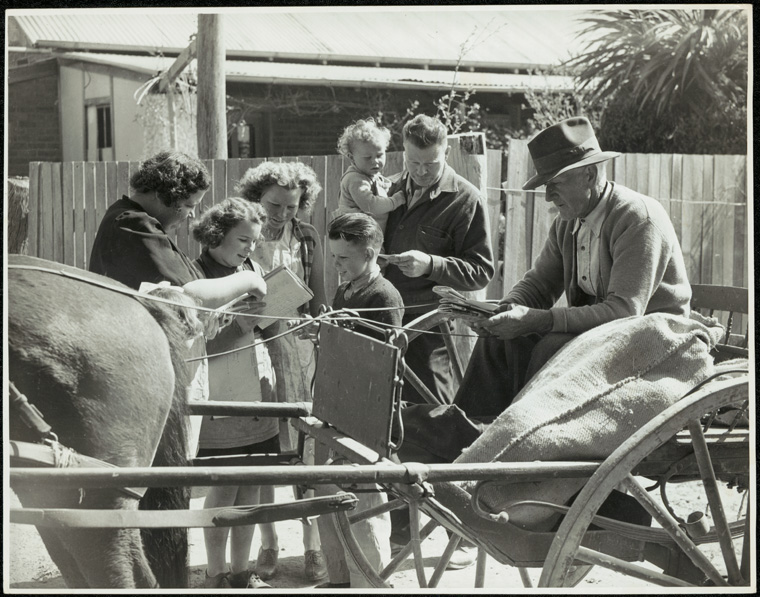
Caption: Correspondence School – The mailman calls at a lonely NSW country home with letters for all, and State Correspondence School lessons for the youngsters. He will take away with him all completed exercises from the previous school delivery.
Digital ID: 15051_a047_003372.jpg
Date: c. 01/01/1946

Caption: Correspondence School – From the Commonwealth Film Unit production School in the Mailbox Directed by Stanley Hawes. With his pet lamb for company Robert has a Correspondence School reading lesson from his mother. All states conduct correspondence schools for country children and all children living more than 3 miles from a school are entitled to the lessons.
Digital ID: 15051_a047_003373.jpg
Date: c. 01/01/1946
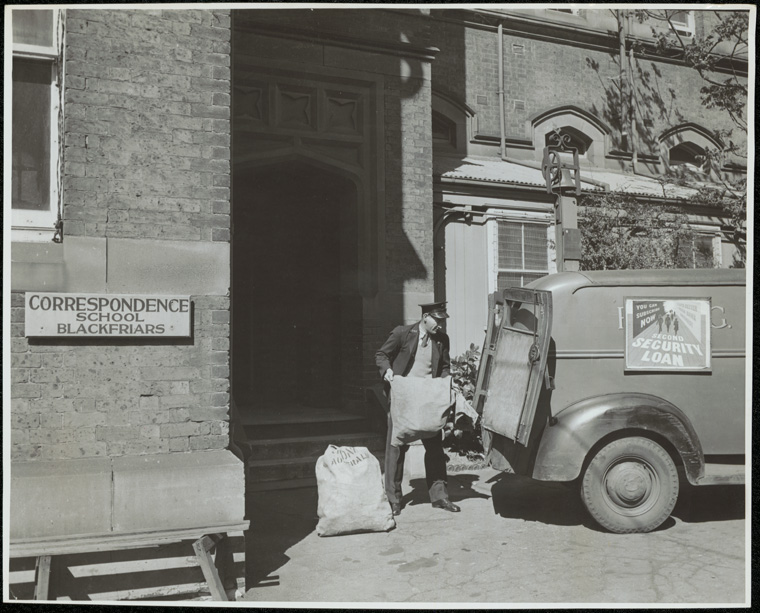
Caption: Correspondence School – Lessons on their way from the State Correspondence School (Blackfriars), Sydney. Everyday P.M.G. mail vans make several journeys from the school with new lessons, and return with work sent in by distant pupils.
Digital ID: 15051_a047_003374.jpg
Date: c. 01/01/1946
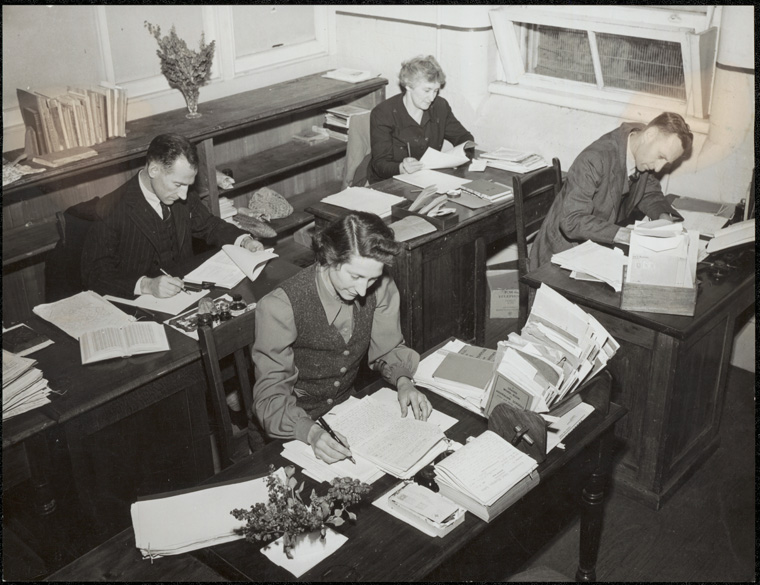
Caption: Correspondence School – From the Commonwealth Film Unit production School in the Mailbox Directed by Stanley Hawes. Under the Blackfriars State Correspondence School’s headmaster’s guidance in Sydney is an enthusiastic staff of 190 teachers.
Digital ID: 15051_a047_003382.jpg
Date: c. 01/01/1946
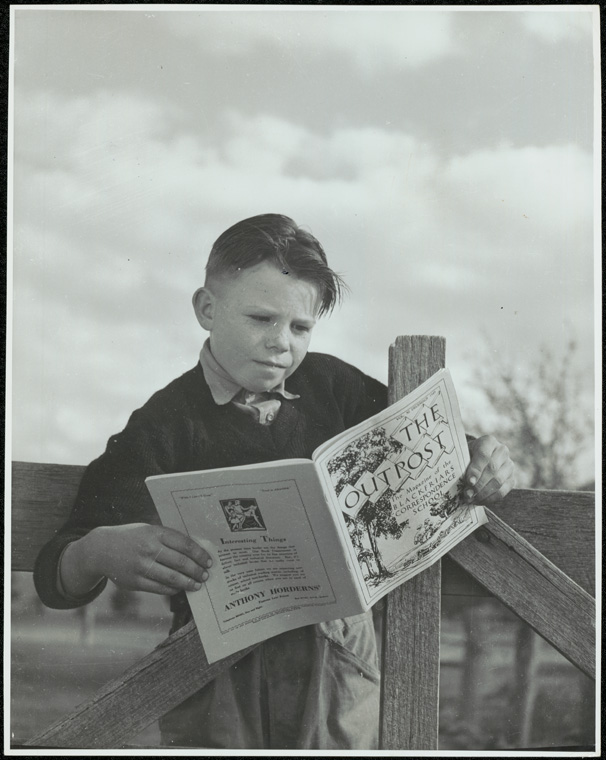
Caption: Correspondence School – Among the State Correspondence School papers the mailman has brought to Bill’s country home in NSW, is the latest edition of the school magazine.
Digital ID: 15051_a047_003375.jpg
Date: c. 01/01/1946
See more images from the State Correspondence School.
Time for a city based Can you date?
Here’s a shot of Martin Place in Sydney’s CBD.
Can you date this photograph?
We have many other undated photographs in Photo Investigator and on our Flickr account. If you know the dates or any other interesting facts about these images please let us know.
A recurrent theme in the Schools Photographic collection, NRS 15051, are photos of school gardens.
Students are depicted toiling in the soil or standing proudly next to a garden in full bloom.
A bit of digging on Trove reveals the school garden scheme was not only a popular pastime that was part of the learning experience, it was also a highly competitive pursuit with school garden competitions going on throughout the state!
In New South Wales the schools have an Inspectorate Competitive System, and all schools in an Inspectors zone compete one against the other, with severe handicap conditions so that actually this year the winner of the Treloar Shield was Byamee School, with fewer than 30 pupils, so that under the system in vogue, the small schools have as much chance as the bigger ones in competition.
SCHOOL GARDENS ‘. (1934, December 26). Townsville Daily Bulletin (Qld. : 1885 – 1954), p. 9. Retrieved June 19, 2014, from http://nla.gov.au/nla.news-article61866534
And here is a photograph of the Treloar Shield winners for 1934 – Byamee Public School’s garden:

Caption: Byamee Public School – Byamee School Garden, winner of 1934 competition – Treloar Shield.
Digital ID: 15051_a047_002178.jpg
Date: year only 31/12/1934
What did the judges have to say about the winning garden at Byamee?
The Judge, who judged the gardens, said, ‘The winning school’s flower garden presented a magnificent display. The Red Radiance Rose Hedge at this school extends for a distance of seventy yards along the front, and in full massed bloom presented a magnificent display. Lavish planting in huge beds produced a riot of bloom, in massed Petunias, Goodenias, Corn flowers, Snapdragons, while extensive rows of Sweet Peas and Holly hocks were respectively ablaze with color.’
SCHOOL GARDENS ‘. (1934, December 26). Townsville Daily Bulletin (Qld. : 1885 – 1954), p. 9. Retrieved June 19, 2014, from http://nla.gov.au/nla.news-article61866534
It appears Byamee continued its winning streak the following year. Succeeding in retaining the Treloar Shield in 1935 :
Fifty-one schools took part in the Tamworth inspectorate schools’ garden competition Results: Byamee 281 points, Manilla 274, Nundle 243, Duri 230, Westdale 233, Kootingal 224, Piallamore 217, Scone 214, Quipolly Creek 202, Brown’s Springs 200, Walhallow 115, At- tunga 188, Barraba 177, Warrah Creek 174, West Tamworth 129. The Byamee school, present holder of the Treloar Shield, retains the trophy. The Manila school secured the highest total marks in the flower garden sec- tion, and retains the Wilson Cup.
SCHOOLS’ GARDEN COMPETITION. (1935, December 11). The Sydney Morning Herald (NSW : 1842 – 1954), p. 16. Retrieved June 23, 2014, from http://nla.gov.au/nla.news-article17235251
See more photographs from NRS 15051 here.